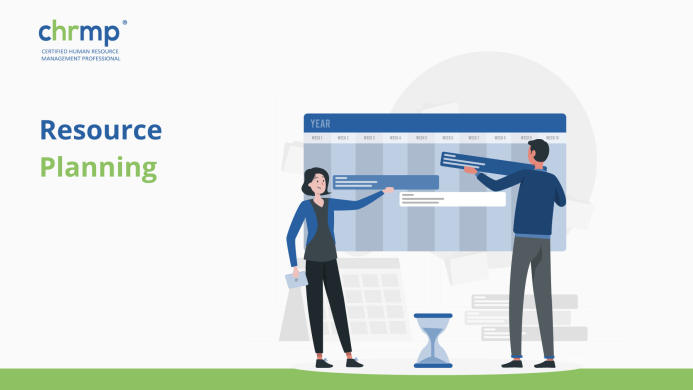

Resource planning is a key element in ensuring the success of any project or business. Planning resources involves several steps, such as identifying the required resources, managing costs, developing a plan to acquire them, etc.
Resources can encompass anything from funds to personnel, equipment or materials. Effectively managing these resources and judiciously using them is an important factor that helps organisations achieve their goals on time.
In this blog, we shall discuss the definition, importance and benefits of resource planning and how it works in project management.
So without further ado, let’s get started!
Resource planning is the process of identifying, acquiring and allocating resources required in a specific project to achieve business objectives in a given timeframe. Resources may include funds and equipment to personnel, materials, etc.
Efficiently managing resources is crucial for the success of any project or business and involves several steps, like analysing the scope of the project and identifying the resources required, managing costs, acquiring and allocating resources, etc.
Resource planning aims to ensure the availability of important resources at the right time and place to achieve project objectives while optimising resource utilisation and minimising costs.
There are several reasons why resource planning is important. Effectively planning resources helps achieve a project or business’s specific goals and objectives within the desired timeframe.
It ensures that the required resources are available at the right time and place to achieve project objectives while optimising resource utilisation and minimising costs. Resource planning also ensures that the resources are allocated appropriately and avoids wastage.
Resource planning also positively impacts several other key areas of an organisation,, including employee productivity, decision-making, communication between various departments and teams, etc.
Resource planning is a major aspect of project management. It entails several steps to ensure maximum efficiency in the allocation and use of resources, which is necessary for achieving specific objectives within a desired timeframe.
Let’s take a closer look at each of these steps:
1. Defining the scope of the project:
Defining the project scope is critical to identify and allocate the necessary resources properly. This involves identifying the project’s specific goals, objectives, deliverables, timelines, and budget. Having a clear and well-defined scope is important to avoid scope creep, which can lead to resource constraints and project delays.
2. Identifying the resources required for the project:
Once the project scope is defined, the next step is identifying the resources required to achieve project objectives. This involves analysing the project requirements and determining the type and quantity of resources needed. For example, this may include identifying the number of personnel required, the specific equipment and materials needed, and the budget required to fund the project.
3. Assessing resource availability:
After identifying the resource requirements, the next step is to assess the availability of these resources. This involves evaluating the availability of personnel, equipment, materials, and budget and determining the constraints that may affect resource availability, such as competing projects or external factors like market conditions.
4. Developing an allocation strategy:
The next step is to develop an allocation strategy based on the project scope, resource requirements, and availability. This plan should include a detailed breakdown of the resources needed for each project phase, along with timelines and budgets.
5. Monitoring and adjusting if required:
Once the project is underway, it is important to monitor the progress of the project and adjust the resource plan as necessary. This may include reallocating resources based on changing project needs or unforeseen constraints, such as delays in equipment delivery or unexpected personnel shortages.
In summary, resource planning is a critical step in project management that involves identifying the specific resources needed to achieve project objectives, assessing resource availability, developing a resource plan, and monitoring and adjusting the plan as necessary throughout the project lifecycle. By effectively managing resources, project managers can ensure that projects are completed within the scheduled timeframe while minimising costs and maximising productivity.
Resource Planning offers a variety of benefits for projects and businesses:
1. Better resource utilisation:
Effective resource planning helps identify the resources required for a project and their reasonable allocation most efficiently and effectively possible. Optimal utilisation of resources is ensured in this manner, which would lead to cost-cutting.
2. Increased productivity:
By allocating the right resources, both time and quantity wise and at the right place, resource planning ensures that projects are completed within the scheduled timeframe, increasing productivity and efficiency.
3. Improved decision-making:
A clear understanding of the resources required for a project is needed, which helps make informed and educated decisions on resource allocation, budgeting, and scheduling. This helps project managers to make better decisions throughout the project lifecycle, and this is what resource planning is all about.
4. Better communication:
Resource planning involves Collaboration between various departments and teams, leading to better communication and understanding of project requirements is what resource planning is about, which leads to improved project outcomes and better alignment of resources with project objectives and reasonable use and allocation of resources.
5. Reduced risk:
Effective Potential risks and bottlenecks that might arise ine of the project need to be identified early on, allowing project managers to develop contingency plans and avoid costly delays. This is what is called effective resource planning.
6. Increased profitability:
Increased profitability by minimising costs, reducing waste, and maximising resource utilisation is a result of effective resource planning.
To summarise, resource planning is essential for achieving project objectives within a given timeframe while minimising costs and maximising productivity. It helps in making informed decisions, improving communication, reducing risk, and increasing profitability.
Resource planning is a critical component of project management that helps in ensuring that the necessary resources are available at the right time, precise in quantitative terms and at the right place to achieve project objectives within a given timeframe. However, there are certain things that should be avoided in resource planning to ensure that the project is completed successfully within the given time frame.
Things to avoid in resource planning could include:
1. Underestimating resource requirements:
One of the most common mistakes in resource planning is underestimating the resource requirement for a project. This can lead to delays, cost overruns, and overall project failure.
2. Over-allocating resources:
Allocating too many resources to a project can lead to a waste of resources and duplication of costs. It is essential to allocate resources effectively and efficiently to maximise their utilisation and minimise costs.
3. Neglecting to consider constraints:
Resource planning should take into account any constraints that might affect resource availability, such as limited budgets, personnel availability, equipment availability, or impromptu lockdowns called by political parties. Neglecting to consider constraints can lead to unrealistic resource plans and unexpected delays.
4. Failure to monitor resource utilisation:
Monitoring resource utilisation is critical to ensure that resources are being used effectively and efficiently and there is no duplication of costs. Failing to monitor resource utilisation can result in wasted resources, increased duplication costs, and delayed project completion.
5. Ignoring risk management:
Resource planning should include risk management strategies to address potential risks that may affect resource availability, utilisation, or allocation at the desired time. Ignoring risk management can lead to unexpected project delays and increased or duplication of costs, and wasted resources.
To summarise, effective resource planning requires avoiding underestimating or over-allocation of resources, considering constraints, monitoring resource utilisation, and including risk management strategies. By avoiding these common mistakes, project managers can ensure that resources are effectively allocated and utilised judiciously to achieve project objectives within the scheduled timeframe and budget.
1. What is resource levelling, and why is it important in resource planning?
Resource levelling is the process of adjusting resource allocation to minimise resource over- or under-utilisation. It helps in achieving a more balanced utilisation of resources throughout the project lifecycle, avoiding conflicts and delays. Resource levelling is important in resource planning because it ensures that resources are allocated in the most efficient and effective way possible, minimising costs and maximising productivity.
2. How do you determine resource availability in resource planning?
Resource availability can be determined by evaluating the current and projected availability of personnel, equipment, materials, and budget. This involves considering any constraints that may affect resource availability, such as personnel availability due to vacations or other commitments, equipment availability due to maintenance or repairs, and budget constraints that limit the availability of resources.
3. What are the benefits of resource planning in project management?
Resource planning provides several benefits in project management, including:
4. How do you manage resource conflicts in resource planning?
Resource conflicts can be managed by identifying the root cause of the conflict and developing a plan to resolve it. This may involve adjusting resource allocation, rescheduling tasks or activities, or seeking alternative resources. Effective communication with team members and stakeholders is also critical in managing resource conflicts.
5. How do you ensure optimal utilisation of resources in resource planning?
Optimal utilisation of resources can be ensured by monitoring resource utilisation throughout the project lifecycle, identifying any deviations from the plan, and making necessary adjustments to maximise productivity and minimise costs. This involves developing a resource management plan that includes resource identification, assessment of availability, allocation to specific tasks or activities, monitoring of utilisation, and control of resource usage.
In conclusion, resource planning is a critical process that requires careful consideration of various factors to ensure that the necessary resources are allocated effectively and efficiently to achieve project objectives.
By avoiding common mistakes and following best practices, project managers can successfully execute projects within the scheduled timeframe and budget, resulting in satisfied stakeholders and successful project completion.
© 2007-2025 CHRMP| All Rights Reserved | Powered by Ripples Learning & Research Private Limited
